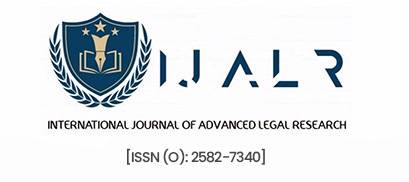ABSTRACT
The concept “One Nation One Election” being a recent transformative and ever-changing proposal made by the government of India to align the elections of both union and state government being contested simultaneously in the territory of India. This typically means holding of all the state and union election processions in a common or specific time frame with the objective of reducing the costing of election as well as enhancing the efficiency of the government by better utilization of resources through synchronization of electoral processions.
This paper critically analyses the current legal framework in the country regarding election procedure and will profoundly examine and explore the requirements of all the modification to be made into the Constitution of India, Representation of the People Act 1951, Delimitation Act 2022, and the Rules of Procedure of Lok Sabha and State Assemblies. One of the most significant strands of the said proposal is to concomitantly conduction of elections of the Lok Sabha and the Legislative Assemblies in all the States and the Union Territories. With the objective to bring down the expected consequences and for the success of the said proposal, certain legal amendments are required to be done, to mandates of various electoral bodies and to some specific provisions of the statutes which particularly deals with the duration and the dissolution of the Legislative Assemblies.
Lastly, this paper strives to elaborate and discuss all the challenges and objectives behind the introduction of such concept and a broader discourse in our democratic framework which mainly includes administrative redundancies, minimization of electoral costings and enhancement of the overall governance. And how the concept such as “One Nation One Election” shows one of the innovative facets of the evolution of the world’s largest democracy.
KEYWORDS
Electoral Synchronization, Legal Amendments, Democratic Innovation, Cross Party Consensus, Governance Efficiency, Constitutional Reform, Political Coordination.
INTRODUCTION
Our country India, is a democratic country with both unitary and federal features. As one of the renowned jurist and constitutionalist K.C. Wheare has righteously defines constitution as “quasi federal” which clearly means separation of powers between central and the state government. This separation of powers is one of the most important federal features of the Indian Constitution which says that the central and the state government have different government and different set of legislations. Therefore, the constitution establishes a system of dual polity with the union and the state government handling different areas of the governance. Now, when we talk about election, which means a process whereby people vote to choose a person or group of people to hold a specific official position. And such process of election takes place according to the different set of rules and regulations mentioned in the Indian constitution and under various other statutes responsible for regulation of the election procession occurring at each level of the democracy. The other statutes concerning the election processions are The Representation of Peoples Act, 1950, 1951, Delimitation Act 1972, Election symbol Act 1968, Anti- Defamation Act, 1985 and lastly the Model code of conduct.
The Constitution (129th Amendment) bill 2024 and the union territory laws (Amendment) Bill 2024, introduced by centre in the parliament on the date 17th oct 2024 to give effect to one nation one election whereby the bill seeks to introduced a mechanism to hold simultaneous election. The bill proposes certain amendments to the constitution and addition of couple of new articles to enable simultaneous election for the Lok Sabha and the State Legislative Assemblies. In India, the general election to elect the members of the state assembly and the parliament are held separately when the incumbent government tenure ends or gets dissolved for the same reason.
Before this, a high-level committee was formed which was headed by the former president of India, Ram Nath Kovind has recommended the idea of simultaneous election of the state assemblies and the parliament. The concept of simultaneous election is not a new notion for India. As in India, simultaneous election to the Lok Sabha and Vidhan Sabha were previously been held in the year 1951-1952, 1957,1962 and 1967 which basically disrupted the flow of entire election procession due to pre- mature dissolution of state assemblies in the year 1968-1969 and of Lok Sabha in the year 1970. But such disruption resulted in certain positive changes or benefits as well including reduction in the substantial costing of election and Simultaneous elections can definitely streamline these processes, enabling better resource management and governance focus. The critics of one nation one election fears that it may undermine federalism, yet historical precedence in the year 1951 has suggested that simultaneous elections can promote cooperative federalism, aligning national and state election cycles which could also foster closer collaboration between governments at different levels, enhancing policy implementation and addressing both national and regional concerns more effectively.

